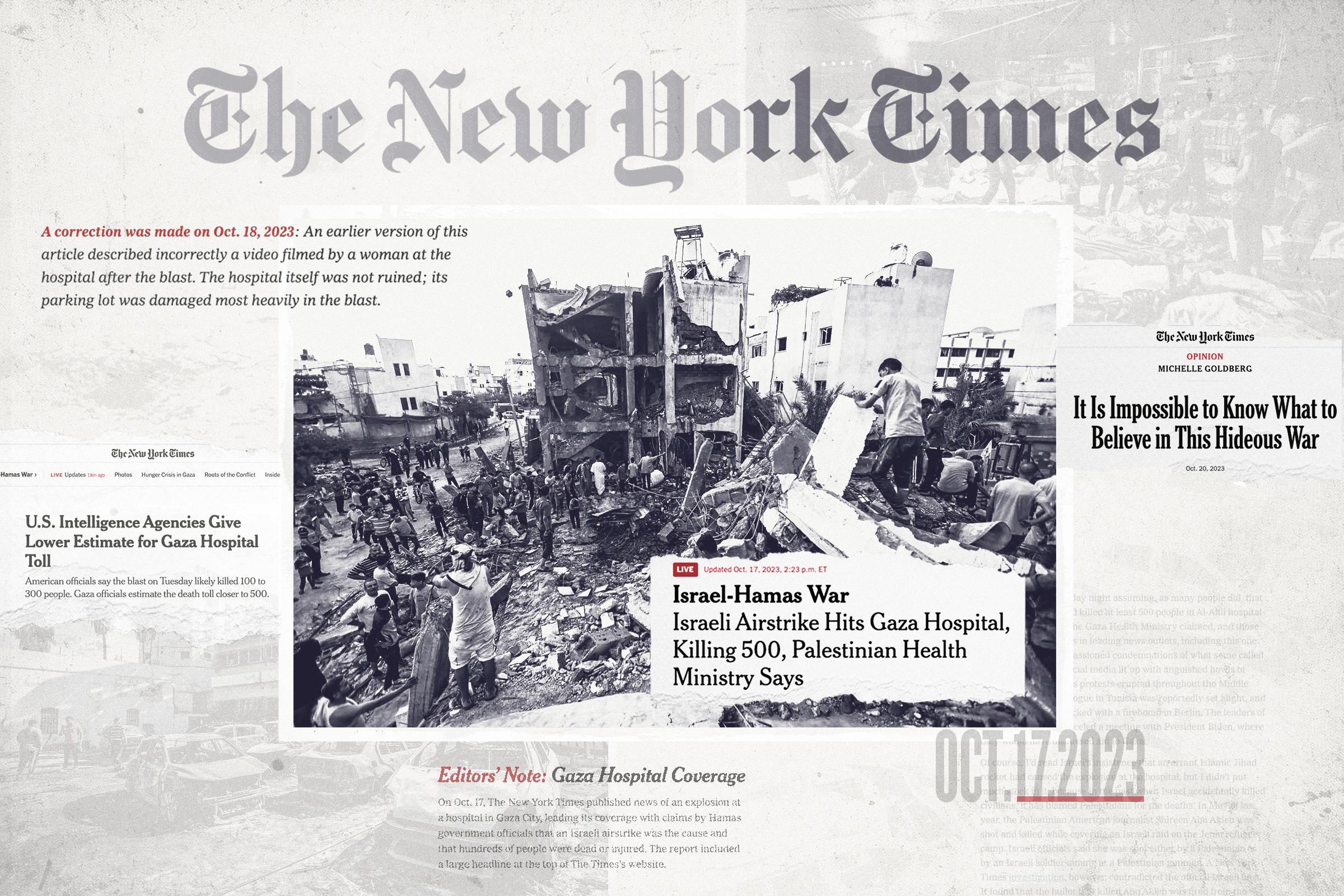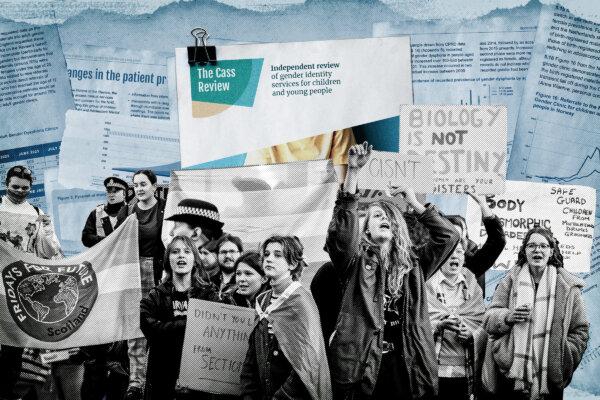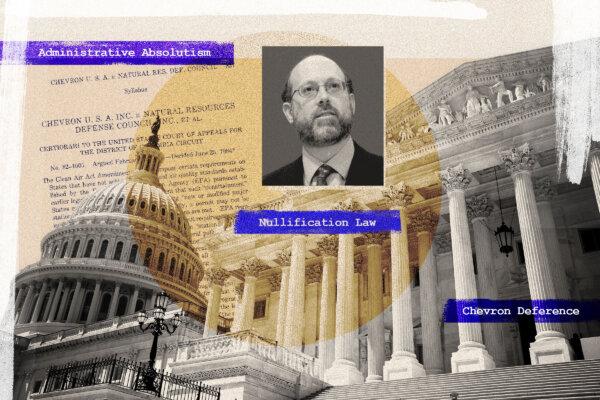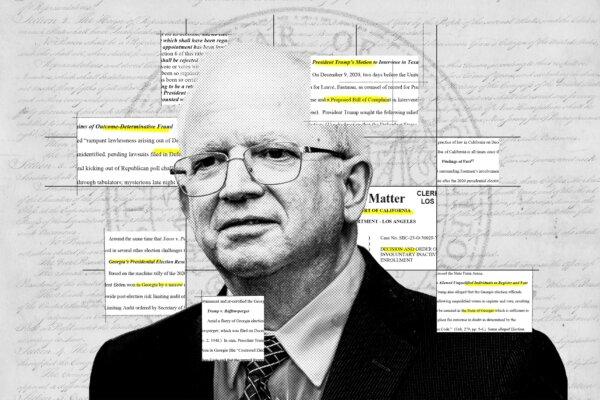The Hamas terrorist group made all of those claims. None of them were true.
Western intelligence agencies over the next few days agreed with Israel that it was an off-course missile fired by the terrorist group Palestinian Islamic Jihad that exploded prematurely. The rocket hit a hospital parking lot where some people were gathered. And most reported the number of casualties as much lower.
The New York Times, regarded as the nation’s newspaper of record for nearly a century, backpedaled through numerous revisions and clarifications of the story over the following days and weeks. Those included an editor’s note about how they covered it and another editor’s note about the first editor’s note. But the newspaper never issued a clear retraction.
This doesn’t surprise those who track the newspaper closely. The New York Times has always had it in for the Jewish state, they say. The paper holds Israel to standards of proof it doesn’t require of, say, the Hamas terror organization running Gaza. The newspaper’s coverage implies, by its endless qualifications and hesitancies, that it doubts what Israel’s spokespeople say.
“What is The New York Times? It’s traditionally, of course, a liberal, left-of-center publication,” Alberto Fernandez told The Epoch Times.
Mr. Fernandez is vice president of the Middle East Media Research Institute. The group translates and publishes press and media reports from the Middle East—valuable information, as what speakers say in their native tongues to their home audiences is often very different from what they say in English or generally for foreign consumption, the group maintains.
“There’s always this tension, of criticism of Israel, or Israel is always wrong. And that’s just the way it is with the types of journalists that they hire and the type of audience that they have.”
On Oct. 7, 2023, when the Hamas attacks on Israel were underway, with fires on kibbutzes still burning and hundreds of Israelis lying dead in its border communities, the NY Times’ early headlines portrayed the Palestinians as victims, Mr. Fernandez said.
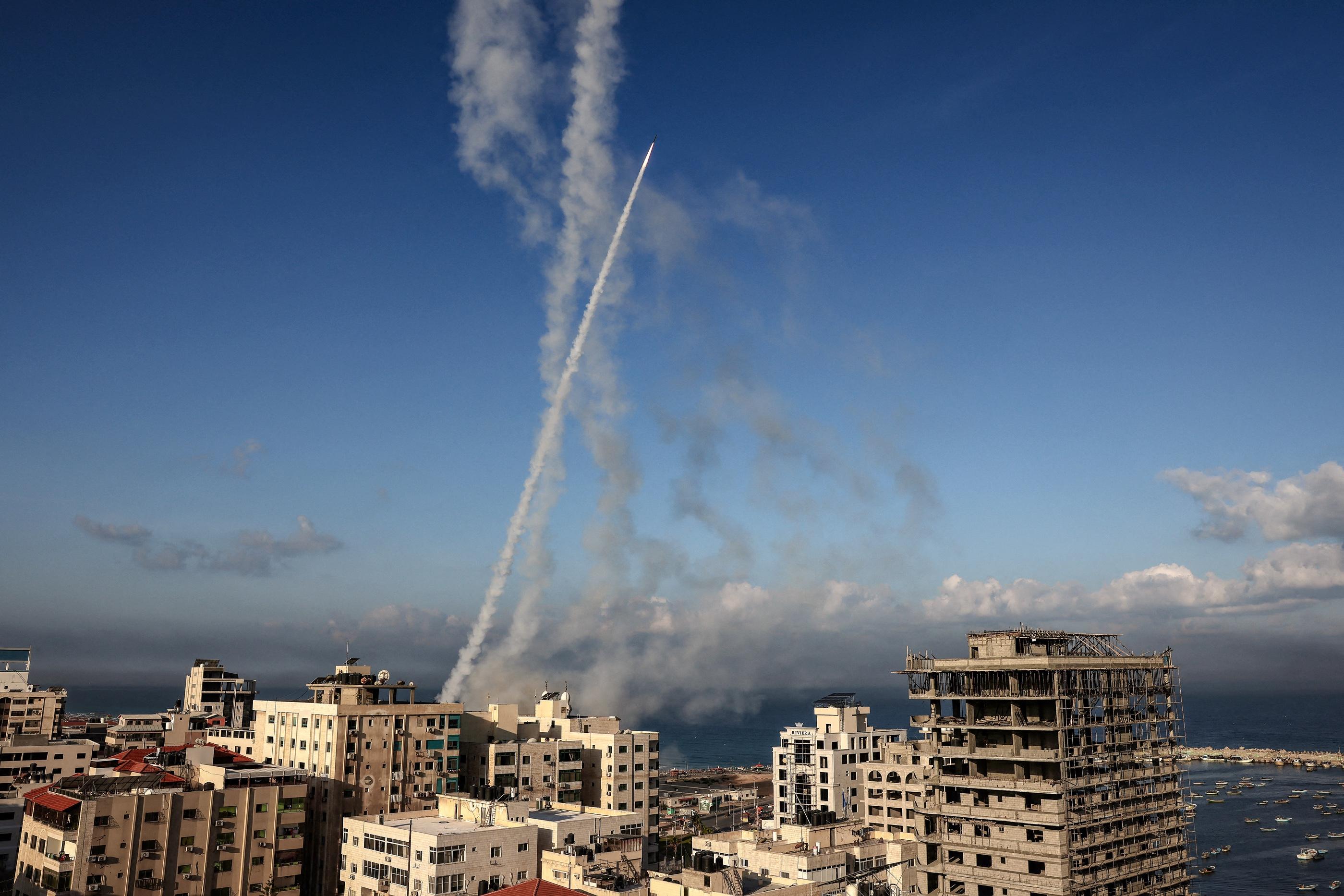
He alluded to a story headlined “Gaza Has Suffered Under 16-Year Blockade” that ran on Oct. 7.
The New York Times has a history of skewed coverage of the Israeli–Palestinian issue, according to Ricki Hollander, a senior media analyst with the Committee for Accuracy in Middle East Reporting in America (CAMERA).
CAMERA has been tracking coverage by The New York Times and other publications and media outlets for years.
In the mindset of The New York Times, “the Arabs or Palestinians don’t have agency; they’re just victims,” she told The Epoch Times.
“They don’t report on them as people who have agency, who can make decisions,” Ms. Hollander said.
Yoram Ettinger, an Israeli intelligence analyst, agrees.
“What we have seen before Oct. 7, since Oct. 7, is detachment from Middle East reality, in the sense that they have decided to ignore completely the track record of the Palestinians,” he told The Epoch Times.
The Hospital Stories
The NY Times, in the opinion of CAMERA and others who track news coverage about Israel, rushed to judgment on Oct. 17, when an explosion took place at Al Ahli Arab Hospital in Gaza City. It was initially reported as an Israeli missile hitting the hospital and killing 500 people.“The most notorious thing since Oct. 7 was the alleged hospital attack that didn’t actually happen at all,” Mr. Fernandez said. “I should say, it seems like the parking lot was hit by a Palestinian Islamic Jihad missile. But you know, the initial report was hundreds of patients killed, the hospital destroyed, and that was, of course, false.
“No. 1, it wasn’t Israeli. No. 2, of course, the hospital wasn’t destroyed. And No. 3, there were not hundreds of people killed either. So it was a triple-threat lie.”
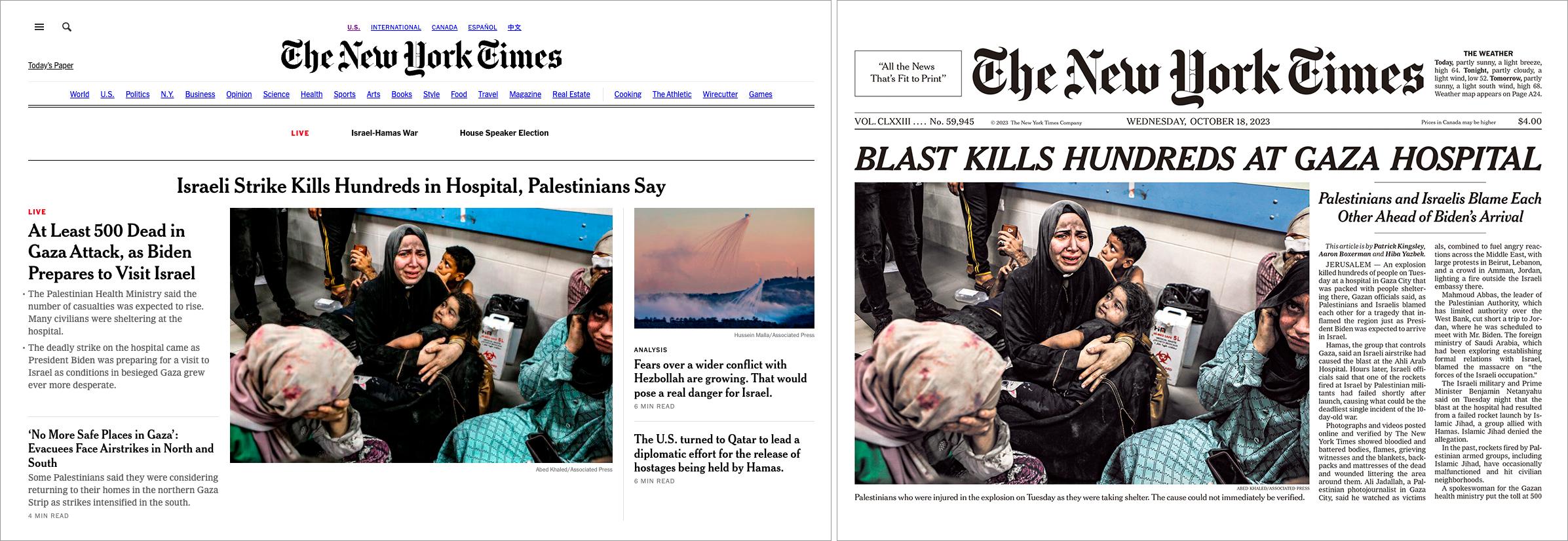
The Times’ “correction” is a single paragraph running at the very end of the lengthy version of the original story, updated on Oct. 19:
“A correction was made on Oct. 18, 2023: An earlier version of this article described incorrectly a video filmed by a woman at the hospital after the blast. The hospital itself was not ruined; its parking lot was damaged most heavily in the blast.”
Journalism ethics codes often call for corrections to be displayed prominently, in a similar position to the original story. The NY Times didn’t do that here.
The lead headline, “U.S. Backs Israel as Cause of Blast Remains Disputed,” contains two subheadlines, “Biden Urges Caution in War on Hamas” and “Vow of $100 Million to Aid Palestinians.” A headline of another story underneath a photo of President Biden and Israeli Prime Minister Benjamin Netanyahu hugging reads “An Explosion, Then ‘Too Many Bodies’ to Count.”
None of these headlines suggest how badly the NY Times got it wrong the first day. They all keep a distance from Israel’s position, which most authorities accepted as correct over the next few days, and amplify the magnitude of the death toll. Right before the jump, the story notes that “neither side’s account could be independently verified, and the precise death toll remained unclear.”
The NY Times’ follow-up coverage over the next few days subjected readers to a slew of dense verbiage. But it never clearly stated “we goofed” or just how wrong they were.
There, a reader learns that “Gaza authorities”—all controlled by Hamas—had put out initial estimates of 500 to 833 fatalities, then settled on 471. Gaza health authorities, the source of many casualty statistics used by the media, are controlled by Hamas, and many press note that when using them.

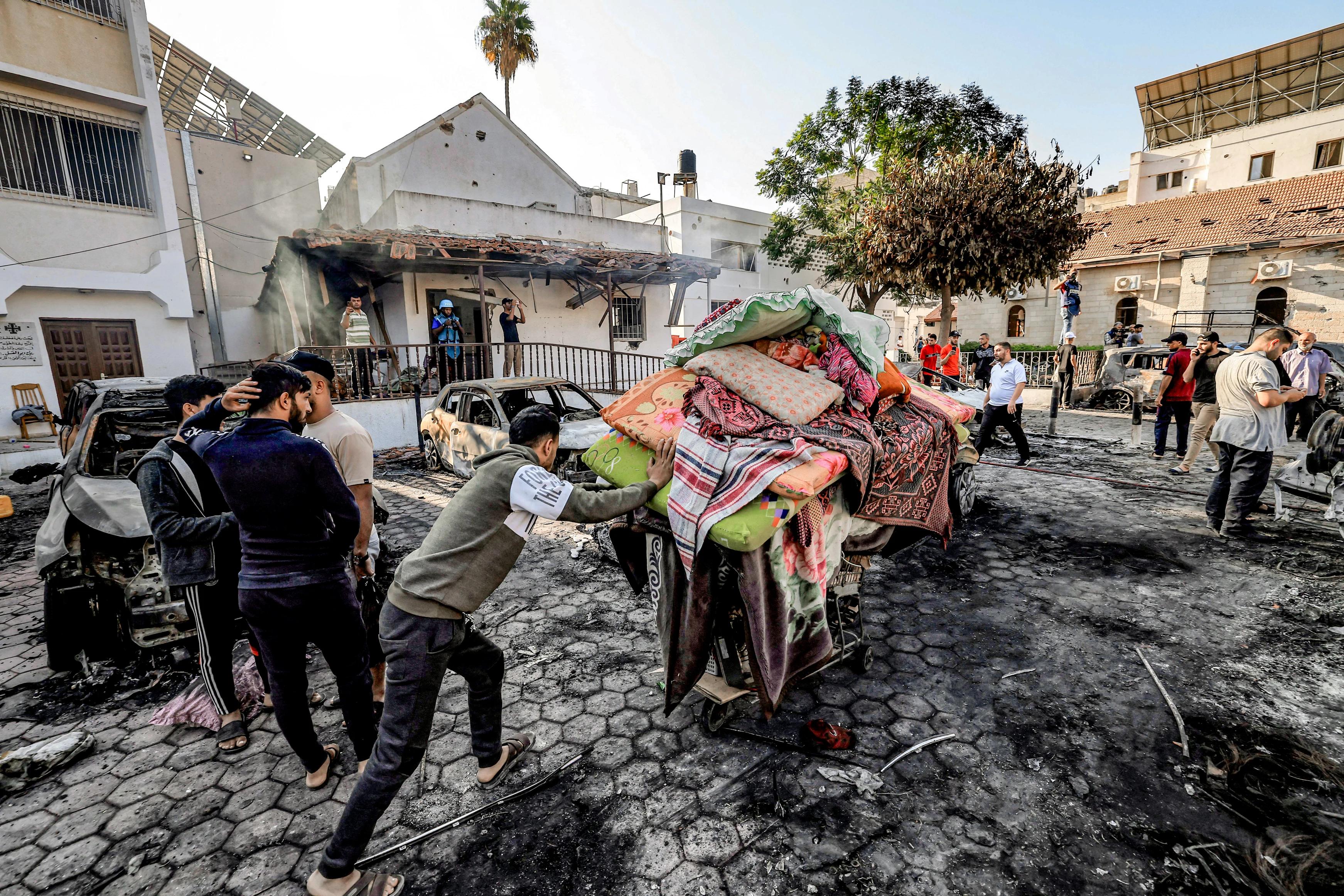
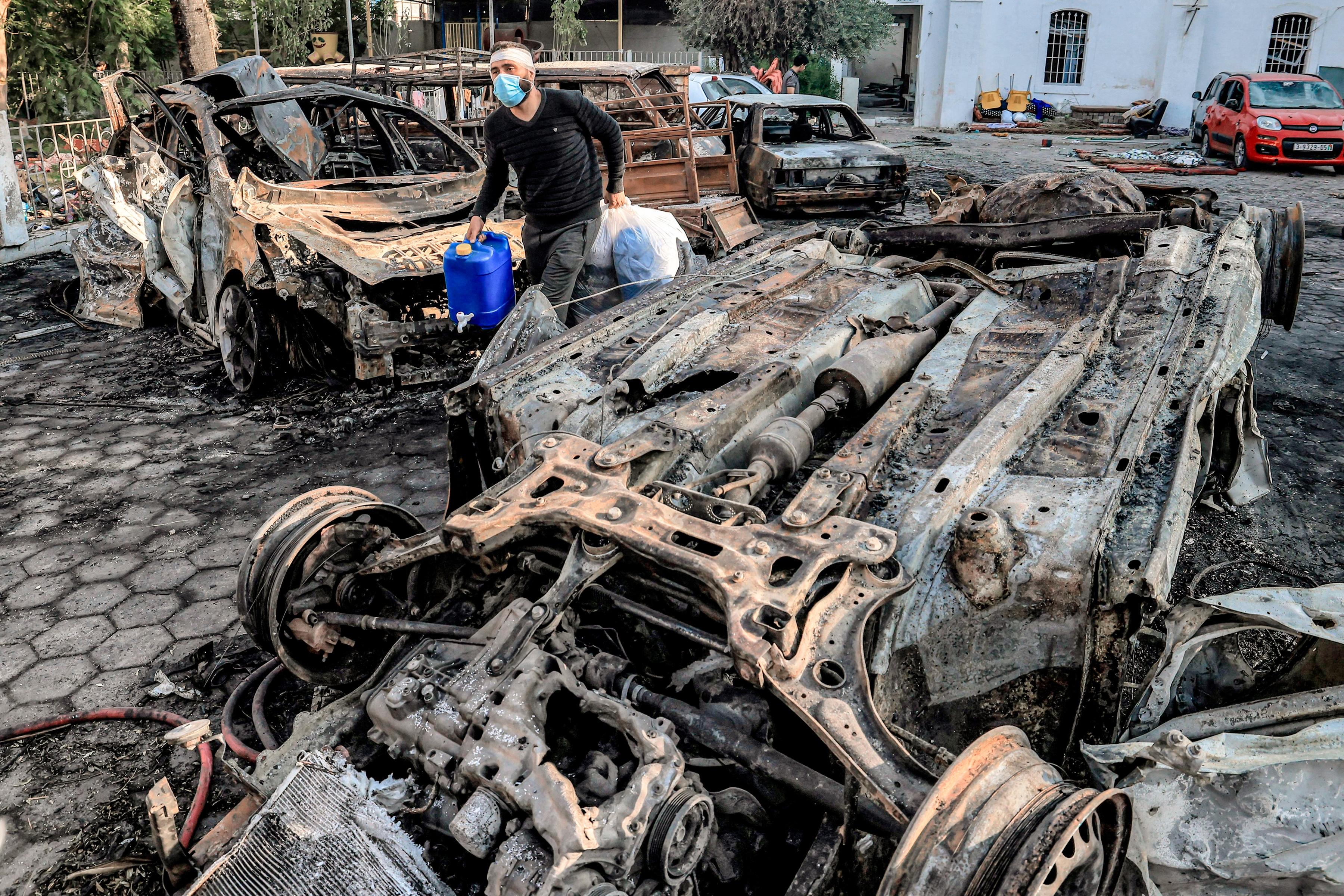
But French intelligence analyzed the size of the crater and stated that it was consistent with about five kilos, or 11 pounds, of explosive, a size consistent both with Hamas’s own missiles and those it gets from Iran. It made a crater roughly a yard long, a little less than that wide, and about a foot deep. It doesn’t at all fit the profile of an Israeli airstrike or rocket attack, according to the French.
“We don’t see at all that a rocket that size could have produced 471 dead. It is not possible,” a French military intelligence official said, speaking anonymously but with President Emmanuel Macron’s clearance.
The rocket apparently traveled on a south-to-north axis, also more consistent with a Palestinian launch than with an Israeli one.
A U.S. intelligence estimate put the death toll at between 100 and 300. Al Ahli Hospital officials would only say “in the hundreds.” The general director of another Gaza hospital said it was 250. Two witnesses said they thought the death toll was merely in the dozens, not the hundreds.
An updated version of the NY Times’ original story bears the headline “Hundreds Feared Dead.”
A brief in a news roundup on Oct. 17 reads, “Hundreds of people were killed by an explosion at a hospital in Gaza City on Tuesday night where thousands of civilians had been sheltering, a loss of life that ignited protests across the Arab world on the same day President Biden left for Israel.”
An Oct. 18 story under the byline “The New York Times” starts showing uncertainty but sticks with Palestinian claims, with the headline “What We Know About the Explosion at the Hospital in Gaza: Much is unclear about the strike that Palestinian authorities say killed hundreds.”
It once more cites Hamas, blaming it on “an Israeli airstrike.” Only after that does it mention Israel’s counterclaim of an errant Palestinian rocket. It quotes President Biden’s statement that U.S. intelligence data backed Israel’s claim. But it follows that up by saying “the competing claims have not been independently verified.”
Another Oct. 18 story shows U.S. intelligence officials supporting the Israeli position. In its second paragraph, it notes, “Hamas has not provided any documentation of Israeli involvement.”
But it qualifies: “The officials cautioned that the analysis was preliminary and that they were continuing to collect and analyze evidence. Neither side’s claims about who was responsible have been independently verified.”
The New York Times has long tended to give the two sides’ claims equal weight, despite Hamas’s being inherently less credible, according to critics.
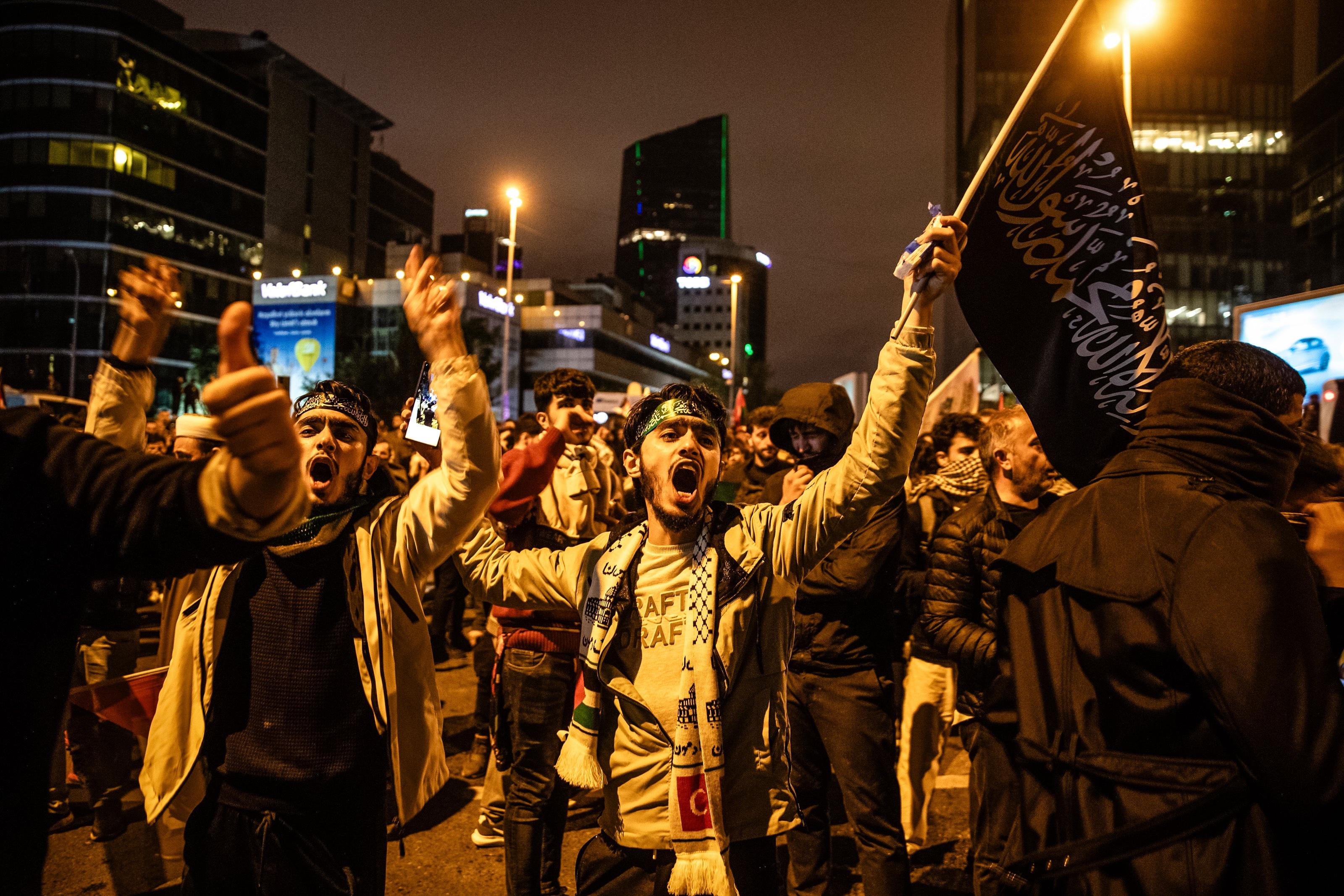
“They should have done what good journalists always do to be right—be skeptical of your source,” Mr. Fernandez said. “And to verify.
“The media rush to get things out, which we all understand. But the other part was, they basically relied on Hamas. And that was the fatal flaw. That was a fatal mistake.
“And of course, it had a tremendous effect in the region and in the United States and so stoked both diplomatic results and diplomatic cancellations. People canceled Israeli demonstrations [about the Oct. 7 attacks] in the United States.”
Corrections are well and good, he said, “but the initial impact, the first one, is what people go with.”
And while it stated that “the death toll was likely at the low end of that [100 to 300] estimate,” the NY Times qualified yet again: “But even if it is revised downward further, officials emphasized that the blast had still caused a significant loss of life” and that “U.S. officials did not say what intelligence led them to their estimated death toll.”
And there’s another “could not be independently verified” in the next paragraph, as well as another instance of giving the two sides’ claims equal weight, despite Israel having growing evidence and consensus on its side and Hamas having neither:
“Palestinian officials have blamed an Israeli airstrike for the blast, an assertion that was disputed by the Israel Defense Forces, which said it was caused by an errant rocket fired by the armed Palestinian faction Islamic Jihad in Gaza. Neither side’s account could be independently verified.”
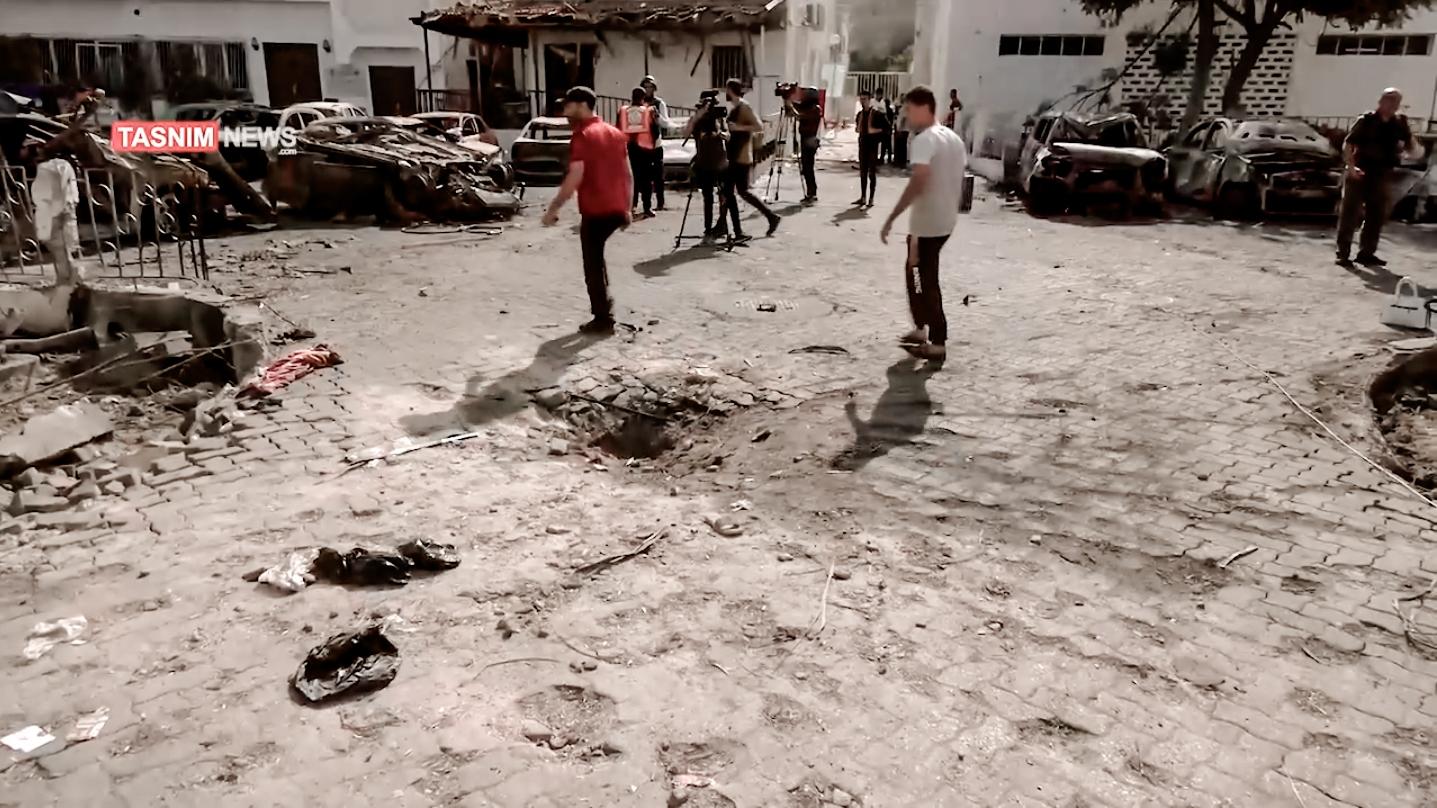
Ms. Goldberg wrote that she hadn’t tended to put much stock in Israel’s assertion of an errant Islamic Jihad rocket because Israel, in her opinion, had a history of blaming Palestinians for its own accidental killing of civilians.
In her column, she first analyzed the NY Times investigations into such controversial incidents—the death of a Palestinian American journalist in the West Bank city of Jenin in May 2022 and the death of five Palestinian boys in a Gaza cemetery a few months later—before she even got around to stating, “As I write this, it looks increasingly likely that Israel was correct about an Islamic Jihad rocket hitting Al-Ahli hospital.”
Late in the story, Ms. Goldberg sympathized with Israel in a backhanded sort of way. She said the hospital incident—the untruthful reporting versus the facts of the matter—is most similar to the 2002 incident when Israel, retaliating after a Hamas suicide bomber killed 30 Israelis at a Passover Seder in Netanya, Israel, attacked Jenin. Palestinian leaders accused Israel of committing a massacre, and one, Saeb Erekat, told CNN that at least 500 people had been killed.
“People all over the world believed these reports,” Ms. Goldberg wrote.
But nongovernmental organizations and the United Nations later concluded that it wasn’t true; the death toll was less than 60.
“This finding, that the Israeli military had committed only a small fraction of the extrajudicial killings it was accused of, was not an exoneration. But it should have been a cautionary tale about accepting incendiary claims of Israeli atrocities at face value,” she wrote.
And the taint of the initial false claims stuck to Israel anyway. Ms. Goldberg quoted The Guardian as reporting that “Jenin already has that aura of infamy that is attached to a crime of especial notoriety” and predicting that it would “live on in memory and myth.”
In a fashion critics find typical of The New York Times, she managed to bend this around to target Israel.
“In much of the world, there will be no dissuading people from holding Israel and, by extension, America liable for the hospital bombing,” Ms. Goldberg wrote. “At the same time, Israel will be able to use this episode to deflect criticism of the violence it really is inflicting on the Palestinians.”
And it faults Israel for a lack of transparency, saying that it “has also turned down a request by The Times to provide logs of all its military activity in the area at the time of the strike.”
The focus of the story, when not amplifying the war’s toll on Palestinian civilians, is all the reasons why the NY Times held that it couldn’t establish what actually happened. It concludes with a photo of corpses in body bags laid out at the hospital following the explosion.
It’s not before the third paragraph that it states, “The Times’ initial accounts attributed the claim of Israeli responsibility to Palestinian officials and noted that the Israeli military said it was investigating the blast.”
Covering Jewish Issues
The NY Times has long had a spotty track record when it comes to Jewish matters. The newspaper, which used to be a must-read for global leaders, obscured the Holocaust as it was happening during World War II, downplaying news about the murder of millions of Jews, according to “Buried by the Times,” a book by Laurel Leff. Ms. Leff noted the paper’s “hypersensitivity” to the fact that it was Jewish-owned.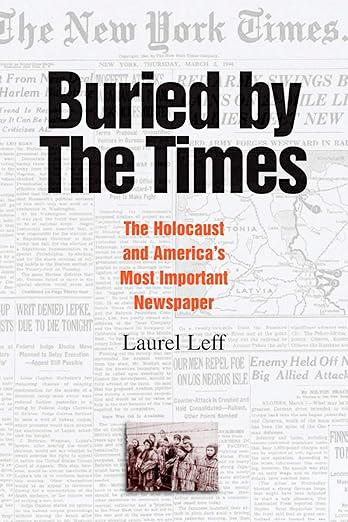
“[At the time,] the Times was less likely than other news organizations to miss what was happening to the Jews, but more likely to dismiss its significance,” she wrote.
For a long time, its owners bent over backward to avoid having the nation’s leading newspaper perceived and perhaps dismissed as a Jewish newspaper, according to Ms. Leff.
She wrote of the tightrope publisher Arthur Hays Sulzberger, the current publisher’s great-grandfather, walked during the 1930s and ‘40s. He was under pressure from the Jewish community, friends, and even his own relatives as European Jews came under more and more duress.
He worried “that if the Times was perceived as a Jewish newspaper it might alienate the Protestant establishment that had embraced the newspaper for its thoroughness and dispassion, or that a Jewish Times might aggravate anti-Semitism by serving as a reminder of Jews’ power in American society,” Ms. Leff wrote.
It avoided covering significant news stories if the Jewish angle was too strong or held off until the government raised the issue and then just covered that, she wrote.
The newspaper soft-pedaled the difficulties German Jews—including cousins of the Ochs and Sulzberger families—were having getting out of Germany in the 1930s. It didn’t put its own weight behind doing anything about it, such as raising strict U.S. immigration quotas that effectively kept Jews out.
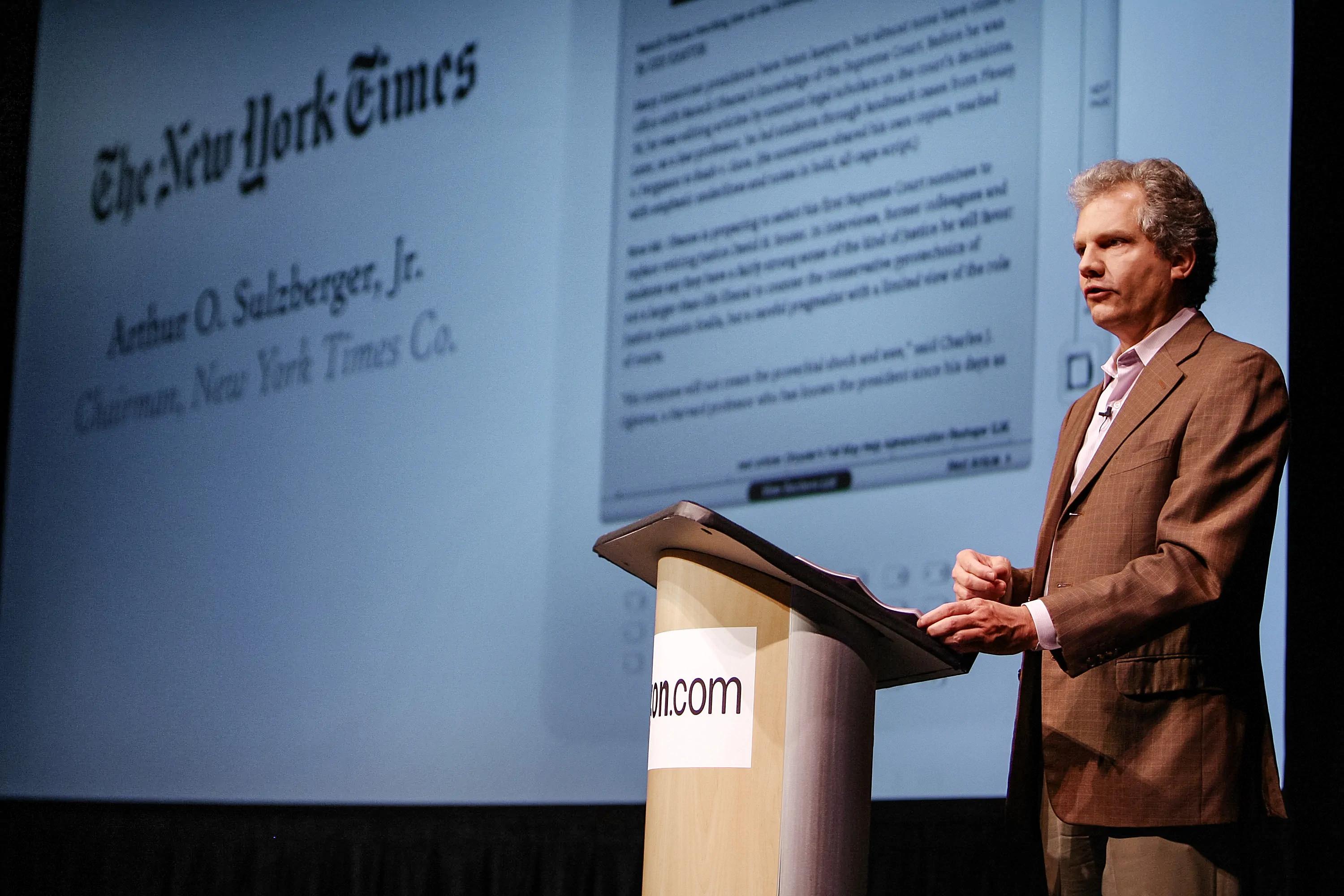
As the Holocaust unfolded, the newspaper’s downplaying of it had consequences, Ms. Leff wrote. Other papers, as well as government and political leaders, took their cues from the NY Times, with its extensive world coverage. They figured they were safe following the lead of a Jewish-owned newspaper—that its judgments on issues concerning Jews were sound.
So other papers didn’t cover the Holocaust heavily either, she wrote, and government officials followed suit in downplaying the issue.
Had the newspaper done a better job, it wouldn’t have necessarily saved Jewish lives, according to Ms. Leff.
“The press’ responsibility was not necessarily to affect government policy,” she wrote. “Rather the press’ responsibility was to harness the flood of information it received about the war—about battles, about strategy, about industrial capacities, and about civilian casualties—and to channel the most critical news to the public.”
The press was just one player and “alone could not have altered the currents of public discourse that swamped the news of the Jews’ destruction, and certainly a single newspaper could not have accomplished that.”
“Still, the Times had an obligation to do more than be swept along with the tide,” Ms. Leff wrote.
Neither did the newspaper support the formation of the state of Israel after World War II. Jewish Holocaust survivors, homeless and often stateless, were desperate for a place to go, and this became the moment of truth for Zionism, a movement started a half-century before. Jews had always lived in the region then called Palestine, but immigration increased with persecution elsewhere and the Zionist desire to create a Jewish homeland.
American Jews were divided on the subject. Ms. Leff wrote that many in the Reform Jewish movement opposed Zionism, the return of Jews to what became Israel, as a matter of principle.
Reform Jews often held that Judaism was a religion but not a race, people, or ethnic group. Most, committed to living in the United States, placed their faith and hopes in this land. They did not want to be accused of dual loyalty.
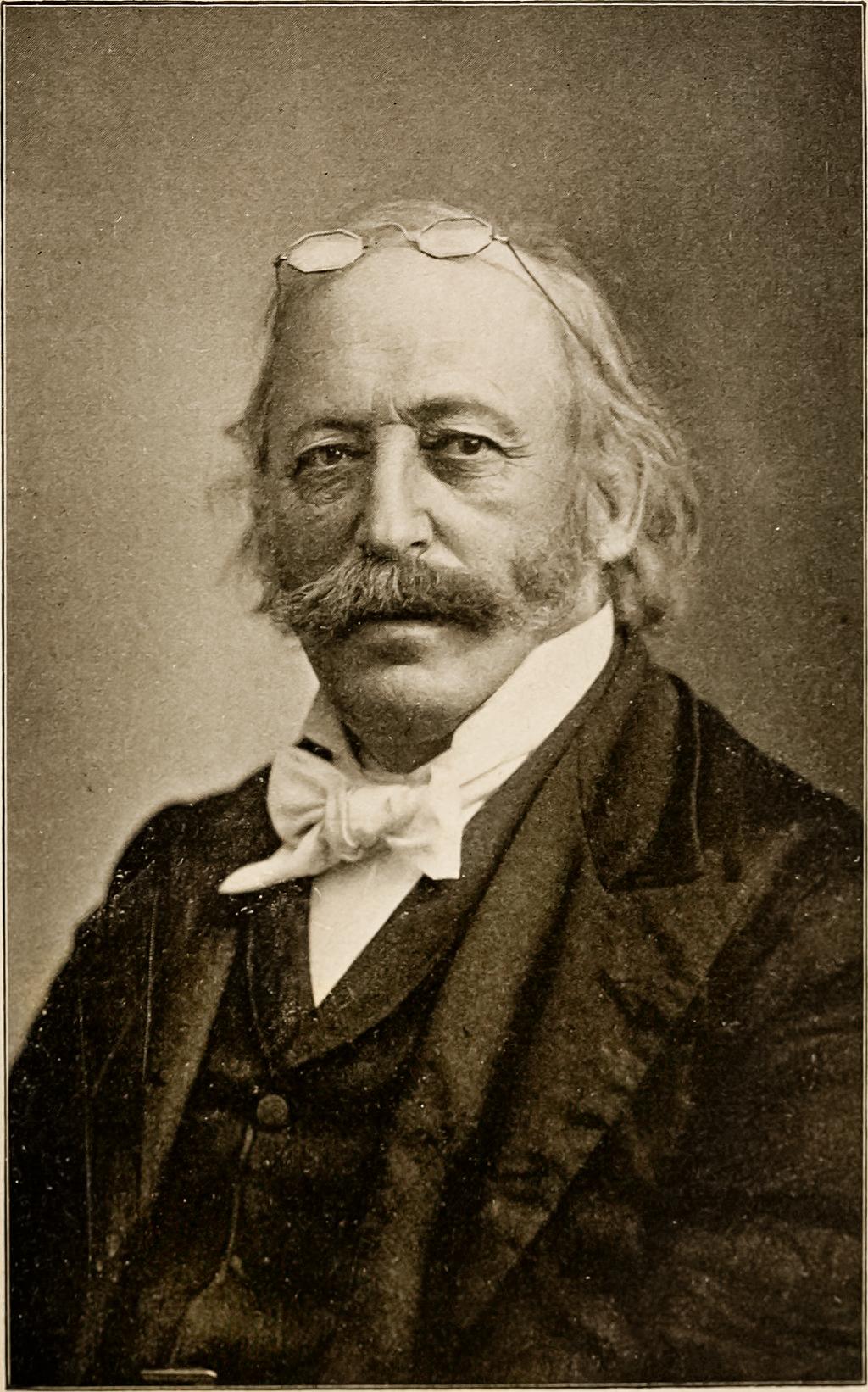
The Reform rabbi who had been the leading proponent of this viewpoint, Isaac Wise, was the grandfather of Times publisher Arthur Hays Sulzberger’s wife, Iphigene. Wise was the preeminent figure in American Reform Judaism in the 19th century and founder of its national association, rabbinical association, and first rabbinical school.
The New York Times has changed, too. Negative coverage of Israel and Jews seems to come from an entirely different place.
Some of the new attitudes at The New York Times are very contemporary, Ms. Hollander told The Epoch Times.
She acknowledged that militant and young “woke” reporters are part of the problem now. These elements of the newspaper’s staff showed their power when they forced the resignation of editorial page editor James Bennet in 2020 for publishing an op-ed by Sen. Tom Cotton (R-Ark.).
In it, the senator supported using the military against those in the Black Lives Matter movement rioting after the death of George Floyd in Minneapolis police custody.
However, Ms. Hollander emphasized that she has seen an anti-Israel vibe growing at the paper for more than 20 years.
There developed a mindset “that Israel is the strong man and that Palestinians are just victims,” she said.
Bias against Israel on its pages has its ups and downs, according to Ms. Hollander. Sometimes it has been worse and sometimes not so bad.
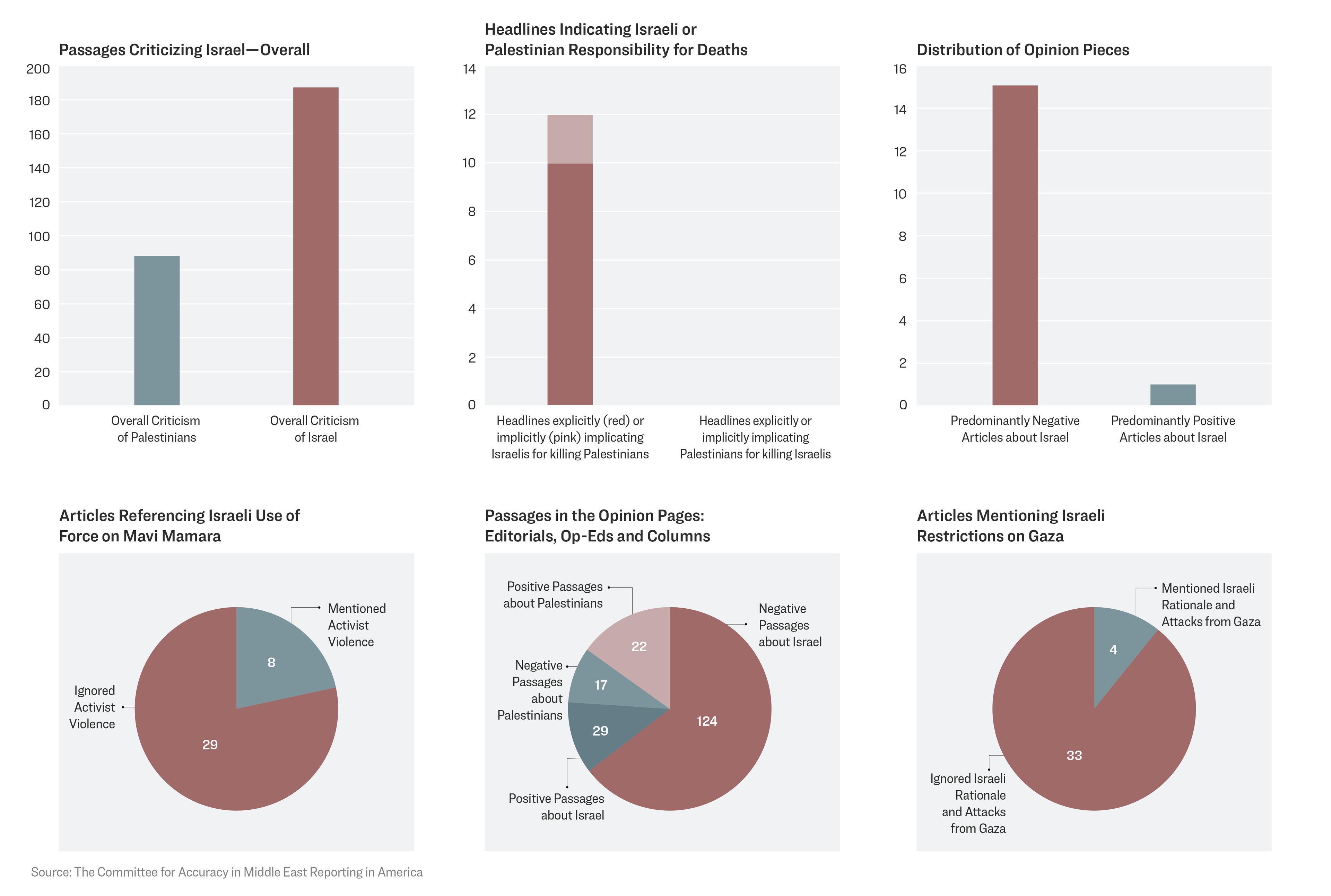
“[The study] reveals empirically that there is real cause for concern,” the study reads. “The dominant finding of the study is a disproportionate, continuous, embedded indictment of Israel that dominates both news and commentary sections.
“Israeli views are downplayed while Palestinian perspectives, especially criticism of Israel, are amplified and even promoted. The net effect is an overarching message, woven into the fabric of the coverage, of Israeli fault and responsibility for the conflict.
“When The Times presents criticism of Israel more than twice as often as it does criticism of the Palestinians, when it features the Palestinian perspective on the peace process nearly twice as often as it does the Israeli perspective, when it consistently omits the context of Israel’s blockade of Gaza, when it rehashes the actions of the Israeli military aboard a Turkish ship but leaves out the precipitating violence by pro-Palestinian activists, and when it de-emphasizes Palestinian aggression and incitement while headlining Israeli defensive strikes, readers can be profoundly deceived about the realities.
“And when other media outlets emulate The Times, the effect of the distortion is greatly magnified.”
The NY Times’ own Jewish employees have sometimes criticized the newspaper for this.
A Columbia University journalism professor and former New York Times reporter, Ari Goldman, wrote in 2011 about how his reporting on the 1991 Crown Heights violence of African Americans against Jews was altered by his editors to fit the “frame” preferred by the editors, one “about a purported race war between blacks and whites instead of the anti-Jewish attacks that Goldman had witnessed and described,” the 2013 CAMERA study states.
A 2002 CAMERA study, “The New York Times Skews Israeli–Palestinian Crisis,” exposed the newspaper’s “distorted emphasis on alleged wrongdoing by the Jewish state during a period of unprecedented terrorism against Israel,” the second Intifada.
“While amplifying news of Israeli military responses, it ignored or minimized Palestinian attacks,” the 2013 study reads.
“The message was clear—Israel was culpable. Ten years later, the message is the same.”
The 2011 period studied was not one of high Israeli–Palestinian tension, the study noted.
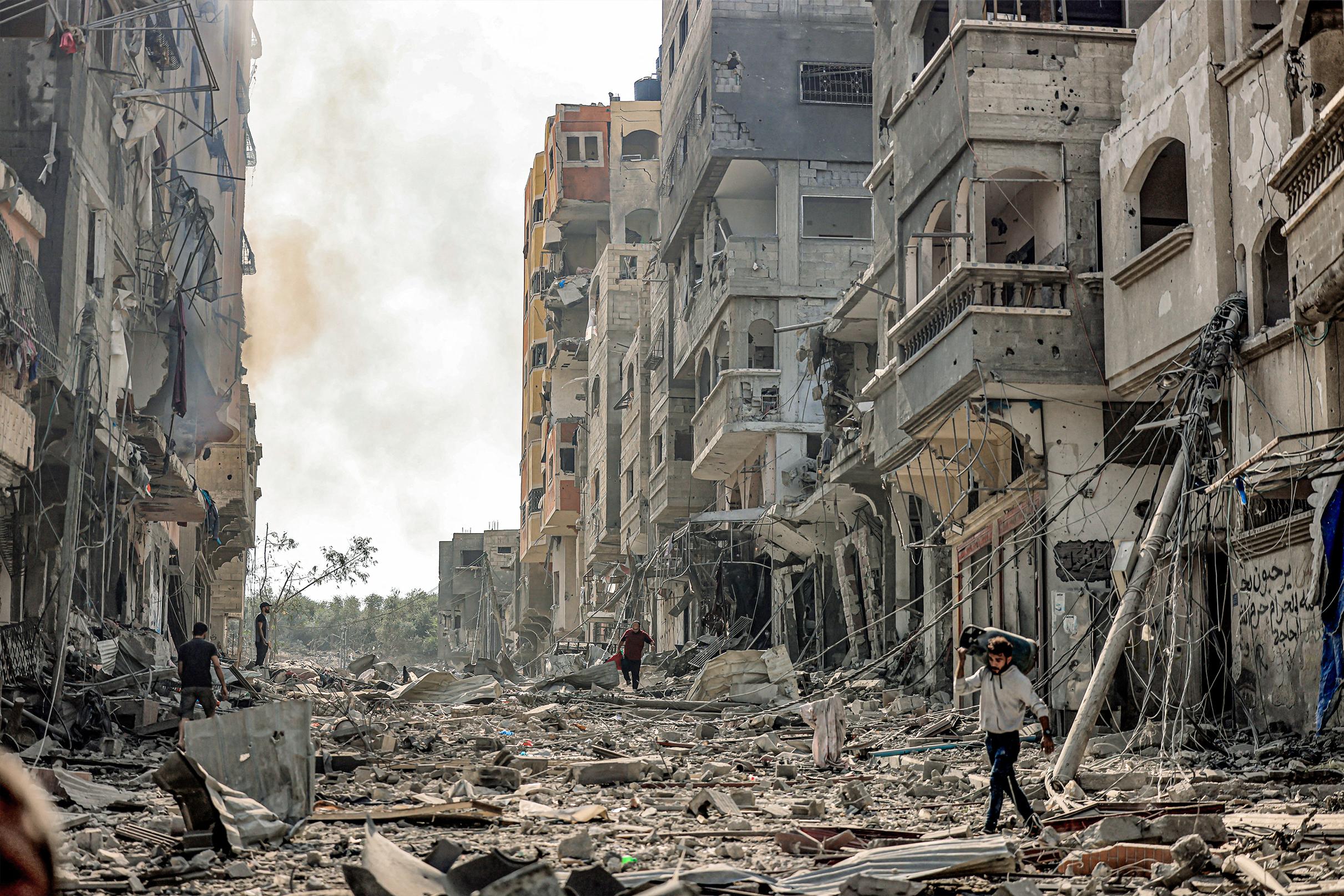
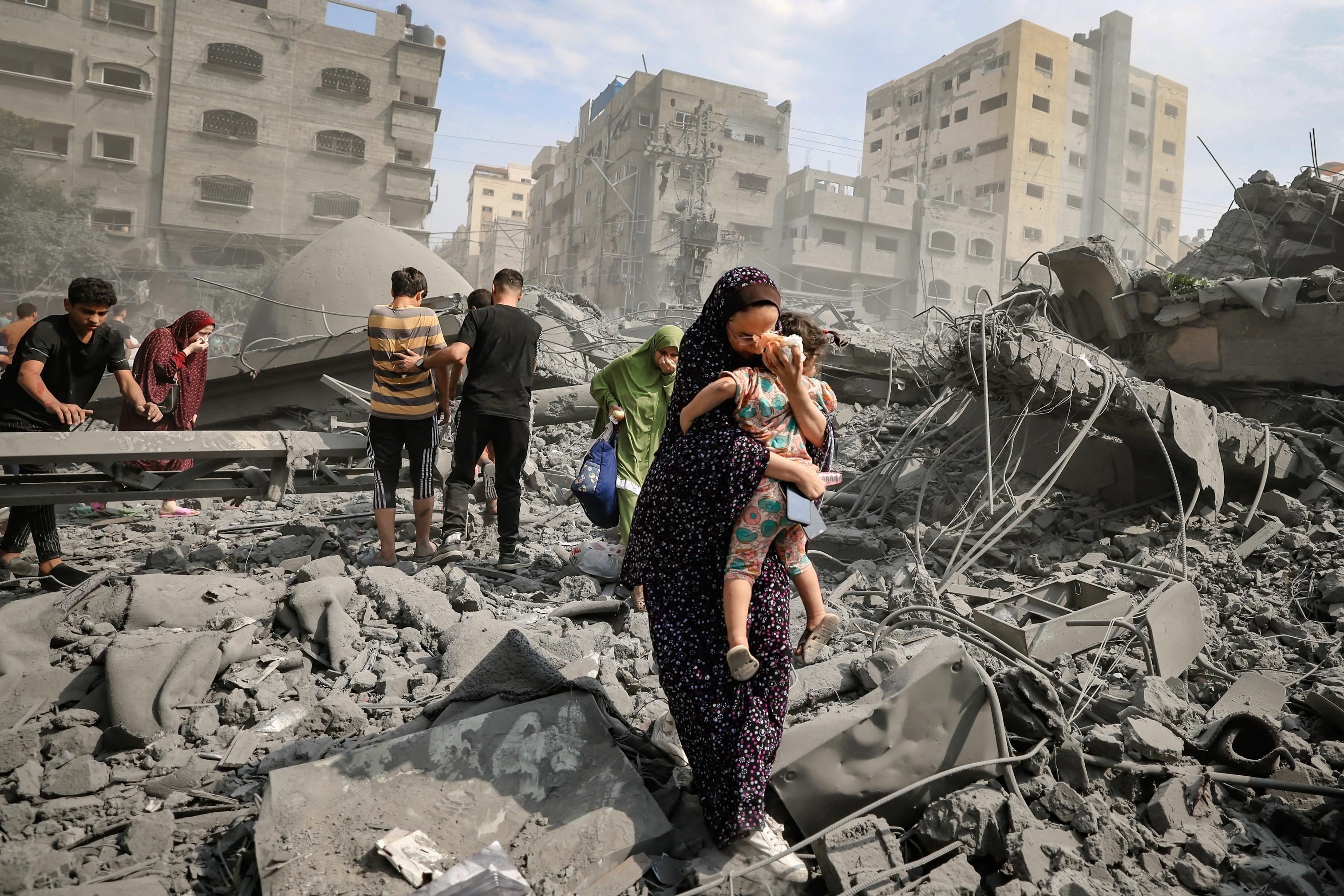
In 275 stories dealing with the issue in the six-month period, 187 were critical of Israel. Fewer than half as many, 88, were critical of the Palestinians, CAMERA found. In articles in which journalists expressed opinions in their own voices, they weighed in 21 times against Israel and only nine times against the Palestinians.
The 98-page study dissects issue after issue and story after story. It contains charts and graphs illustrating findings in excruciating detail. It examines issues as broad as the peace process in the U.N. and as specific as Israel’s 2010 attempt to stop a Turkish ship, the Mavi Marmara, from breaking an Israeli blockade to illegally enter Gaza.
A U.N. report on the incident came out during the 2011 period CAMERA studied.
“Nearly 80 percent of New York Times stories on it that mentioned Israel’s use of force aboard the ship completely ignored the corresponding events—the violent attacks by anti-Israel activists on board that precipitated Israel’s response,” the study reads.
Israel is widely known as the safest and most hospitable country for gays in the Middle East, a place where Arab gays sometimes flee for safety. But in one New York Times op-ed, a CUNY professor and radical activist, Sarah Schulman, said Israel’s support of gay rights was just a ploy, or “pinkwashing,” to make it appear supportive of human rights while it supported human rights abuses against Palestinians.
An Israeli government official who tracks the NY Times agreed to be interviewed by The Epoch Times, provided the official’s name wasn’t used. The official said attitudes toward Israel vary by department.
The Times’ Flagship Columnist
Epitomizing the NY Times’ record on Israel is its flagship columnist on the Middle East, Thomas Friedman. Once the NY Times’ Jerusalem bureau chief, Mr. Friedman has won the Pulitzer Prize three times: in 1983, for his coverage of the Sabra and Shatila massacres in Beirut; in 1988, for his coverage of the first Palestinian Intifada; and in 2002, for commentary.
“I have no doubt that The New York Times, and particularly Tom Friedman ... are driven by very positive and noble ideas and intentions,” Mr. Ettinger told The Epoch Times.
“The problem is that those noble intentions and ideas, to bring peace, to produce peace, and to bring justice and morality and democracy, have nothing to do with the real Middle East.
“Many, many Western policymakers, as well as public opinion molders such as The New York Times, have been frustrated with Middle East reality because we’re talking about 1,400 years of nonpeaceful coexistence among Arabs and among Muslims. We’re talking about 1,400 years of volcanic, shifty, unpredictable, intolerant, violent, fragmented reality.
“What can one expect of such reality when it comes to resolving the Palestinian issue or the Arab–Israeli conflict?”
He labeled what they advocate as “a virtual alternative reality.”
“If you base your future plans, your policy, on unrealistic foundations, you produce more evil and more damage than those that already exist,” Mr. Ettinger said.
An email from The Epoch Times to Mr. Friedman’s publicity agency requesting an interview with him received no response.

Mr. Friedman was wrong, Mr. Ettinger wrote, in equating Palestine Liberation Organization founder Yassir Arafat with Israeli Prime Minister Yitzhak Rabin as the Oslo Accords peace process began in 1993 and later failed.
Mr. Ettinger quoted Mr. Friedman’s writing (often referring to him as T.F.): “‘Two hands that had written the battle orders for so many young men, two fists that had been raised in anger at one another so many times in the past, locked together for a fleeting moment of reconciliation.’
“T.F. was trapped by Arafat’s strategy of dissimulation (‘Taqiyya’), highlighting Arafat’s peaceful English talk, ignoring Arafat’s violent Arabic talk, and playing down Arafat’s unprecedented terroristic walk since the 1993 Oslo Accord.
“In July, 2000, T.F. posed the question: ‘Who is Arafat? Is he Nelson Mandela or Willie Nelson?’ A more realistic question would be: ‘Who is Arafat? Is he Jack the Ripper or the Boston Strangler?’”
Mr. Friedman, according to Mr. Ettinger, had been pro-Palestinian since his student days at Brandeis University, when he had belonged to a “pro-Arafat, radical-Left Middle East Peace Group and Breira organizations.”
Reporting in Lebanon for the NY Times and The Associated Press, Mr. Friedman “played down Arafat’s and Mahmoud Abbas’ rape and plunder of Lebanon, and their collaboration with Latin American, European, African and Asian terrorists, while expressing his appreciation of the PLO’s protection of foreign journalists in Beirut (who responded in kind ...),” Mr. Ettinger wrote.
The 2020 Abraham Accords between Israel and the United Arab Emirates, Bahrain, Morocco, and Sudan “were concluded—in defiance of T.F.’s worldview—because they centered on Arab interests, bypassing the Palestinian issue, denying the Palestinians a veto power over the Israel–Arab peace process,” Mr. Ettinger wrote.
Mr. Friedman, in 2022, writing that Saudi Arabia considered the Palestinian issue central to its agenda, seemed oblivious to the “cold-to-negative Saudi walk on the Palestinian issue.”
“Contrary to T.F.’s assessment,” Mr. Ettinger wrote, “all pro-U.S. Arab regimes do not welcome a Palestinian state, which they expect to be a rogue regime, and therefore have never flexed their military or diplomatic (and barely any financial) muscle on behalf of the Palestinians.
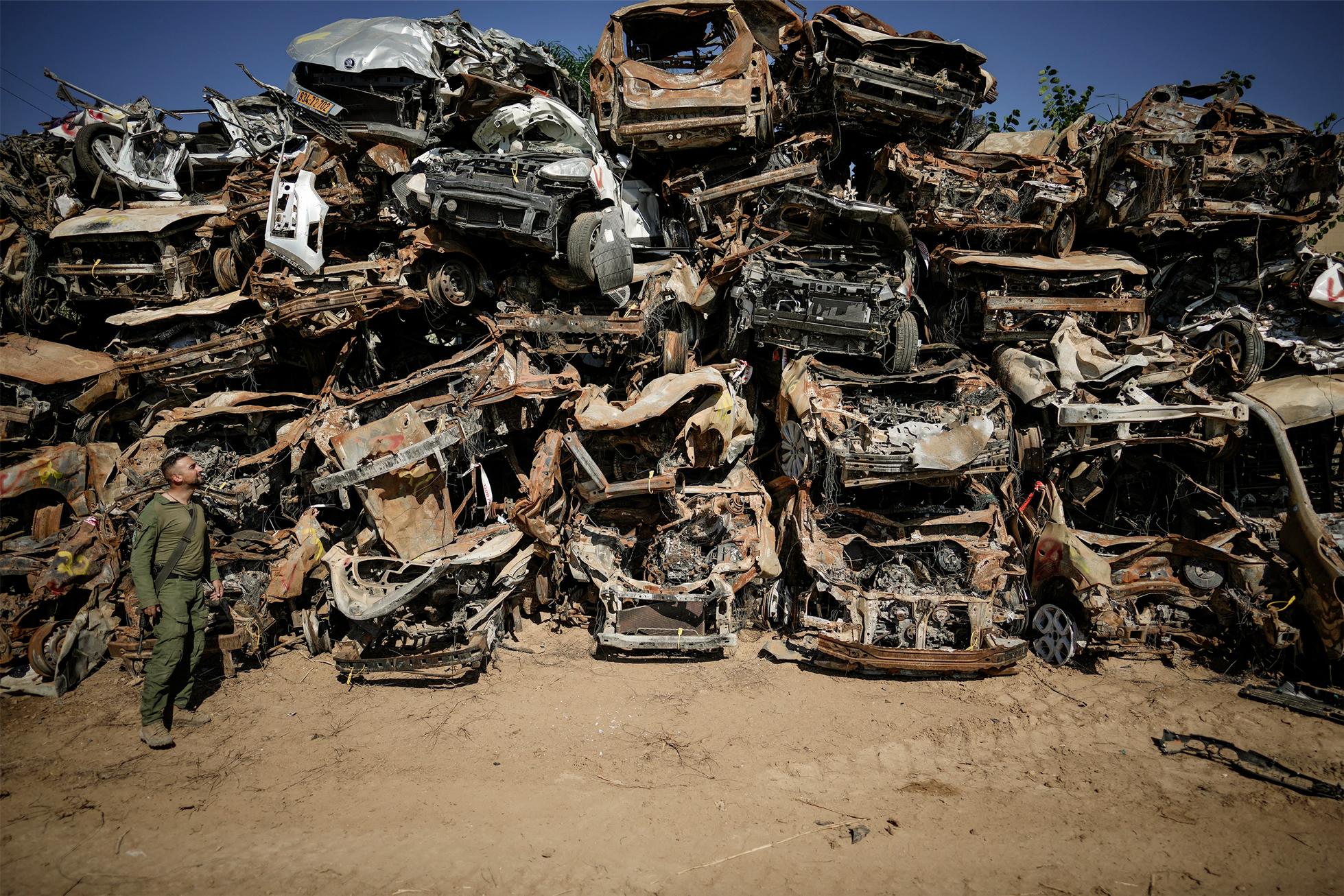
“They consider Palestinians as a role-model of intra-Arab subversion, terrorism and ingratitude, based on the Palestinian terrorist track record in Egypt (early 1950s), Syria (mid-1960s), Jordan (1968-1970), Lebanon (1970-1982) and Kuwait (1990).”
The Palestinians, Mr. Ettinger told The Epoch Times, have destabilized every Arab nation that has hosted them, even that of Egypt’s Gamel Abdel Nasser in the 1950s, an icon of Arab nationalism and implacable foe of Israel.
The Arab states have a much more realistic view of the Palestinians than The New York Times does, he said.
Mr. Friedman has similarly painted current Palestinian leader Mahmoud Abbas as “a moderate, peace-seeking and anti-terrorism leader,” thus “ignoring Abbas’s K–12 hate-education system, inciting sermons in Palestinian mosques, public monuments honoring terrorists and his monthly allowances to the families of terrorists,” according to Mr. Ettinger.
“Since Oslo 1993, Abbas’s Palestinian Authority has been a most effective production-line and hothouse of terrorists,” he said.
Mr. Ettinger found Mr. Friedman out of touch on numerous other issues. He was charmed by Bashar Assad when he rose to power in Syria and optimistically predicted that he would liberalize Syria, attract Western investors, terminate Iran’s involvement in Lebanon, and pursue peace with Israel—all predicated, of course, on Israel’s withdrawal from the Golan Heights.
“However, as expected, Bashar decided to adopt his ruthless father’s brutality, demolishing T.F.’s assumptions and slaughtering Syria’s domestic opposition, irrespective of the Golan Heights and Israel’s existence,” Mr. Ettinger wrote.
Mr. Friedman made similar optimistic predictions about the so-called Arab Spring in 2009. He tried to argue away the Muslim Brotherhood running the show in Egypt, Mr. Ettinger said. But they, in fact, took over when President Hosni Mubarak was deposed. Mr. Friedman rosily predicted democracy breaking out in the Arab world.
“He was determined to prohibit Middle East reality to alter his vision, which is consumed by globalization, modernity, democratization and the Internet,” Mr. Ettinger wrote. “Unfortunately, the increasingly boiling and seismic Arab Street from Morocco to the Persian Gulf has repudiated T.F.’s Pollyannaish vision.”
Mr. Friedman has argued that a Palestinian state west of the Jordan River would serve U.S. interests. That’s not so, Mr. Ettinger maintains: It would likely bring down the pro-U.S. Hashemite monarchy in neighboring Jordan, “triggering a domino scenario southward, threatening the survival of all pro-U.S. oil-producing regimes in the Arabian Peninsula.” And that would be a strategic bonanza for Iran’s ayatollahs, Russia, and China, he said.
Mr. Ettinger said history shows that national security stems not from peace but from the posture of deterrence.
“It deters terrorism. It does not eliminate it, but deterrence minimizes terrorism, deters wars, and, in fact, also attracts peace partners,” he said.
“In order to be realistic, whether it’s The New York Times or The Washington Post, or LA Times, or NPR or CNN, whatever, [they] should recognize the nature of the Middle East.
“Under such circumstances, one cannot talk about peace now or peace around the corner. One has to adjust to long-term thinking.”
